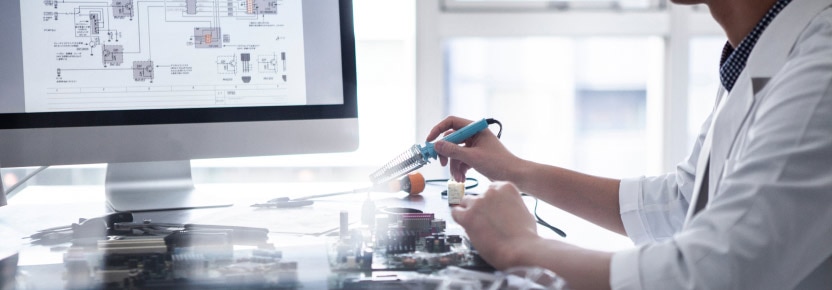dina Amin aligns with DigiKey to put her own twist on assembling the Pirate Radio Kit from Pimoroni.
Combine retro and modern technology to join the DigiKey Sponsored Hackaday Reinvented Retro contest.
DigiKey answers 6 FAQs about the marketplace for a better understanding and overall user experience.
DigiKey will discuss Marketplace products, the new warehouse expansion, and more at the 2021 ERA virtual conference.
Thirty-two universities based in the United States with robust engineering communities were selected to participate by Electronic Design’s editorial staff.
The 2019 FIRST Robotics Competition season kicks off this Saturday, January 5th and DigiKey is excited to be a part of it!
Retrocomputing - restore an old style “suitcase” computer using a Raspberry Pi.
Maria Bauza, an MIT student, wants to improve machine learning technology in autonomous robots. One idea she has is to add some tactile sensing.
You want your kids to have fun this summer, but you still want to keep that educational train rolling. Wired Magazine has a few ideas to help.
As medical technology advances, we find new ways to treat those suffering from, and born with, heart disease—which is where wearable electronics come in.
Simon Monk from Adafruit offers 4 lessons to get you started with the micro:bit.
An interesting collaboration between the University of Washington and the Allen Institute for AI results in a project that aims to get AI to simulate a dog.
Nicholas Huchet’s friends were afraid he wasn’t getting a fair shake in their Nerf battles due to missing a hand so they created a bionic Nerf blaster to help even the score.
Losing the use of your hand can be a real challenge, luckily technology is available to help.
We are now one-step closer to Star Trek-like biosensor devices capable of flagging the barest presence in blood of a specific virus or antibody, a protein marker for a specific cancer; or sniffing out airborne chemical warfare agents while they are still far below toxic levels.
Amazon was granted a patent in March 2018 that will allow their delivery drones to recognize human movement and speech, which means that rather than having to contact Amazon directly to report customer service issues, people will be able to communicate directly with their delivery drone.
Researchers at Harvard University have developed a way to embed sensors into soft robotics. With these sensors, the robots will be able to sense (and respond) to what is going on in the world around them.
FIFA has talked about the possibilities, and benefits, of wearable tech in the past and it looks like this upcoming season may see wearable tech implemented in the form of GPS trackers.
Keepon, a cute little social robot, is being tested by researchers to see if social robots in general could be used as a way to teach children conflict resolution.
If you love the magical world of Harry Potter (who doesn’t?) then you are going to love this moving portrait project!







